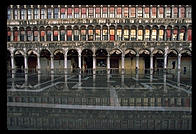
Venice: San Marco
by Philip Greenspun; revised December 2007
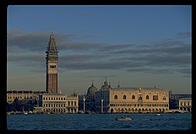
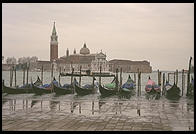
St. Mark's corpse had almost as tough a time as Hector's (dragged three times around the city of Troy by Achilles). First the Christians of Alexandria had to fight off pagans who wanted to cremate the body. Then the Venetians had to steal it from Alexandria in 828 because Muslims were going to desecrate the church where it was installed. To get the remains out of Egypt, the Venetians allegedly hid them between slices of pork, calculated to deter inspection by Islamic customs officials. The body was thought lost in a fire in the first Basilica San Marco in the year 976, but "reappeared when the new church was consecrated in 1094." Now it sits in a white marble tomb front and center of the magnificent Basilica that sits front and center in the magnificent Piazza San Marco that sits front and center in the life of the tourist.
San Marco the sestiere has been the focus of Venetian life and
government for centuries.
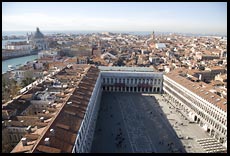
The Piazza itself assumed its present form in the Renaissance. It is the only space in Venice that is called "piazza". Everything else is simply a "campo" (field) or "piazzetta". It is also one of the lowest points in the city and frequently flooded.
The buildings lining the Piazza were originally constructed as offices for government employees. Today, the Piazza offers two famous cafes, Florian and Quadri, with outdoor seating. At the northeast corner is the clock tower, completed in 1506, with a Latin inscription that translates to "I number only peaceful hours."
For overview photos of the Piazza, go to the upstairs gallery and museum of the cathedral, or take the elevator to the top of the Campanile.
The Byzantine cathedral (1094) is famous for its mosaics, inside and out, the four gilded bronze horses on the front, and the Pala d'Oro altarpiece. Photography is forbidden, but enforcement is lax. The mosaics are illuminated every day between 11:30 a.m. and 12:30 p.m.
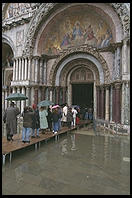

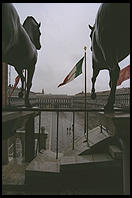
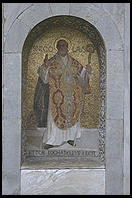
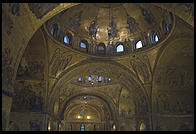
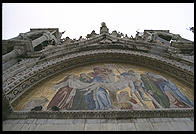
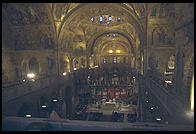
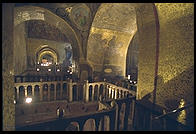
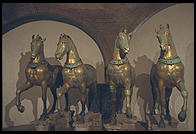
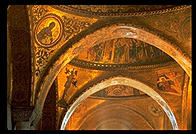
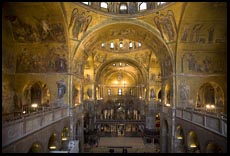
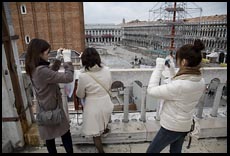
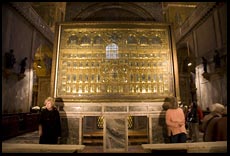
At 325 ft. high, the tallest structure in the city. The original collapsed in 1902; the modern structure was completed in 1912. This is the place to go for aerial views of the city. In peak season, arrive at 0900 sharp to avoid waiting in line for the elevator.
The Piazzetta connects the Piazza to the water, running in front of the Palazzo Ducale. The statues and columns were taken from Tyre (in present-day Lebanon) in 1170. The space between the columns was used for public executions.

The Palazzo Ducale, or "Doge's Palace", contains a lot of big rooms, very nicely decorated by Tintoretto, Veronese, and other famous Venetian artists. The "Bridge of Sighs" leads from here into the adjacent prison, from which Casanova escaped.
Photography is forbidden within the Palace, but enforcement as of 2007 was rather lax.
The palace contains the world's largest oil painting, Paradiso by Tintoretto. My favorite painting, however, is a ceiling work depicting a dog, who illustrates the virtue of "Loyalty."
Pay an extra 8 euro for the audio guide or risk severe confusion inside the Doge's Palace.
The Riva degli Schiavoni is the waterfront street that connects San Marco to Castello. This is a great place to take pictures of tourists taking pictures of the Bridge of Sighs.
San Marco is where you'll find most of the luxury shops and hotels as well as most services geared to tourists. It can sometimes be difficult to find humbler shops selling things necessary for residents, which is another reason why Venetians like to grumble that tourists have ruined everything and that they city is declining before their eyes.